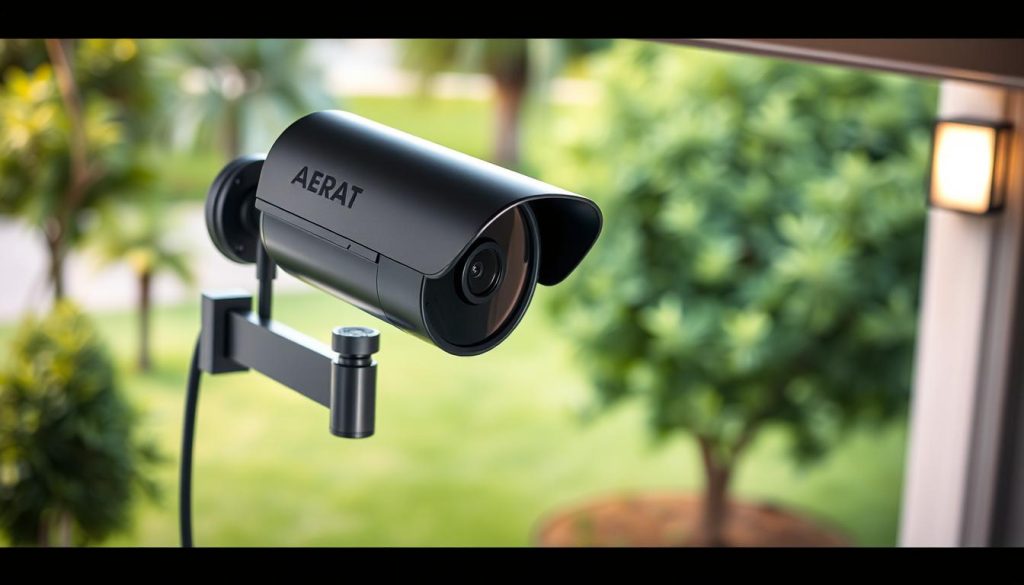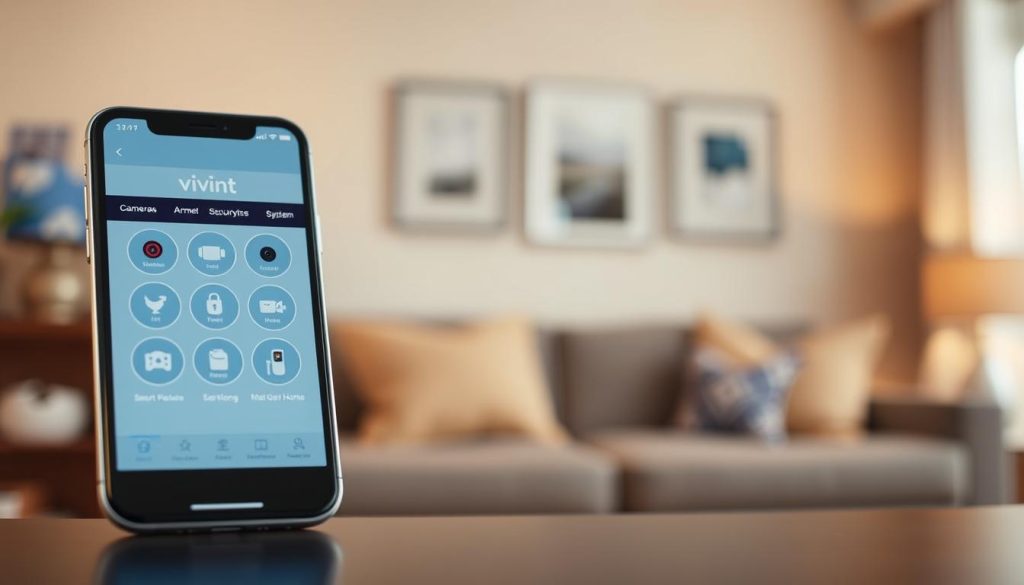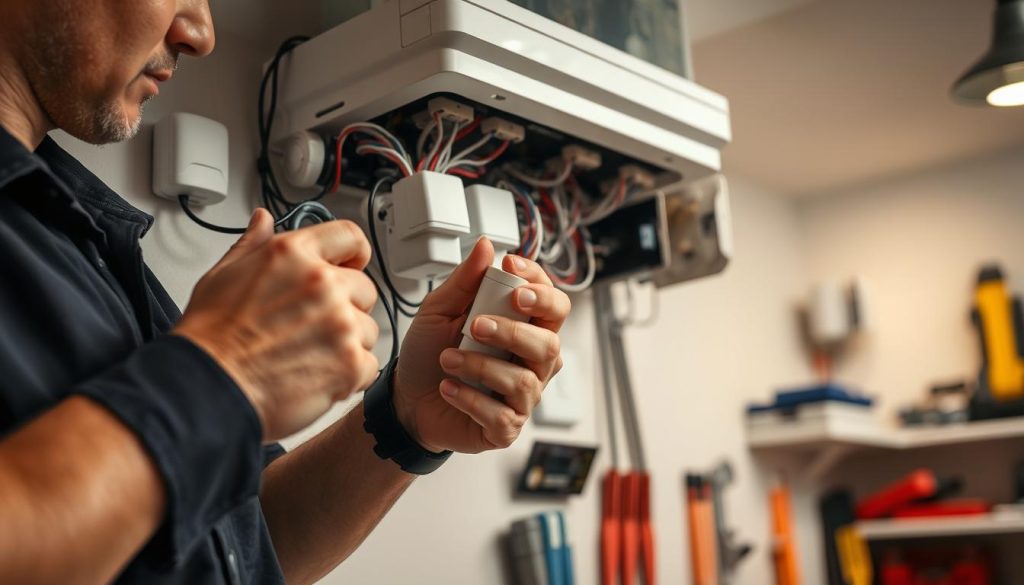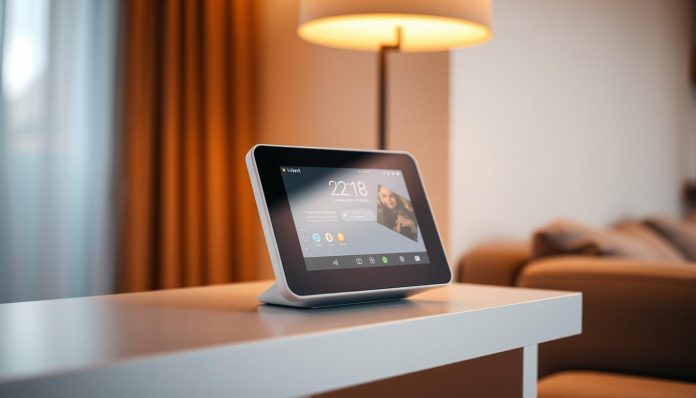You’re about to get a clear, hands-on look at a premium home security system that scores highly in independent testing. This introduction explains why reviewers rate the solution around 9.1–9.4 out of 10 for feature depth and reliability.
Expect a focused overview of how top-tier packages compare for coverage, cameras, and automation centered on a centralized smart hub. You’ll see who benefits most: larger residences and owners who want advanced automations and white‑glove installation.
Key highlights include AI-powered cameras, two-way talk, local storage, and fast professional monitoring that works with on-device deterrence. The section previews total ownership costs—from equipment and setup to ongoing monitoring—so you can weigh fit for your property.
By the end, you’ll understand the role of the smart hub as the control center for sensors and cameras, and why many users praise the system’s reliability and smart automations.
At a Glance: Your Quick Take on Vivint’s Best Value vs Best Protection
This quick take sums up what each tier includes, how much equipment costs, and what you’ll pay per month for monitoring.
Starter bundles commonly begin at $449.99, mid‑tier doorbell bundles at $674.98, and fuller safety + security kits near $1,024.99. Required professional monitoring starts at $29.99 per month. Systems that include cameras and smart devices typically start at $39.99 per month, with an added $5 per month per camera.
The control panel experience uses the same Smart Hub foundation across tiers. Financing equipment can extend contracts up to 60 months; otherwise monitoring can be month‑to‑month.
| Tier | Typical Starting Price | Includes | Monitoring |
|---|---|---|---|
| Starter | $449.99 | Base sensors, keypad | $29.99 per month |
| Doorbell | $674.98 | Doorbell cam, extra sensors | $39.99 per month + $5/camera |
| Safety & Security | $1,024.99 | Multiple cams, environmental sensors | $39.99 per month + $5/camera |
- Snapshot: choose starter for affordability or the full kit for broader coverage and deterrence.
- Expect transparent monthly fees and clear tradeoffs when you add cameras or finance equipment.
Vivint’s Home Security Packages Reviewed: Best Value & Best Protection
This section breaks down two common bundle strategies: a compact, cost-conscious set and a broader, camera‑heavy option.
The core system includes the smart hub, door and window sensors, and motion detectors. You can add glass‑break, smoke/CO, and water sensors as needed. Bundles are mapped to your floor plan during professional setup so devices sit where they matter most.
- The smart hub ties cameras and sensors together and supports two‑way audio, local/cellular backup, and live viewing.
- Common camera options include Indoor Camera Pro, Doorbell Camera Pro, and Outdoor Camera Pro for deterrence and recording.
- Add‑ons like glass break and water leak detectors raise real‑world safety without major extra complexity.
Professional monitoring is required and testing shows average agent response near 35 seconds. That fast response, combined with monthly monitoring plans, is why many people pick a fully managed approach.
| Focus | Core Devices | Typical Add‑ons |
|---|---|---|
| Lean setup | Smart hub, door/window, motion | Smoke/CO, basic camera |
| Camera‑forward | Smart hub, multiple cameras, sensors | Glass break, water, advanced cams |
Tip: use current vivint offers to upgrade a value‑focused package with one or two high‑impact add‑ons for better overall coverage.
Core Control: Vivint Smart Hub and the arm/disarm experience
The 7-inch vivint smart hub puts core controls within easy reach. From the wall-mounted or tabletop control panel you can quickly arm and disarm, view cameras, and talk directly to monitoring agents.
The smart hub shows Disarm, Arm (Stay), and Arm (Away) modes with a clean, touch-driven interface. You set custom rules so alerts, sirens, and camera recording react the way you want.
The unit supports two-way talk for fast verification during alarms or false triggers. That means you can resolve an event without grabbing your phone.
Resilience is built in: a 24-hour battery backup and LTE cellular failover keep the system active if Wi‑Fi drops. Live camera feeds display on the hub so you can verify noises or activity at a glance.
- Arm/disarm from the hub or the vivint app for consistent control across devices.
- Use Arm (Stay) for occupied periods and Arm (Away) for full perimeter protection.
- Configure rules to route notifications, enable sirens, or start recording when sensors trigger.
Cameras Deep Dive: Outdoor Camera Pro, Doorbell Camera Pro, and Indoor Camera Pro
Explore how each Camera Pro model and the Spotlight Pro work together to capture crisp video and stop suspicious activity early.

The Outdoor Camera Pro (about $399) uses a 4K sensor with 1080p output, HDR, and a 140° field of view. Optical plus digital zoom, strong night vision, and local storage improve clarity and reduce glare.
Smart Deter defines loitering thresholds and flashes LEDs or sounds an alarm to warn off intruders. The unit can tell people, pets, and vehicles apart to cut false alerts.
The Doorbell Camera Pro records at 1664p HDR with a 180° x 180° view. It runs on wired power, supports IR night vision, and uses AI to spot deliveries versus porch theft. Custom zones and on‑board storage enable 24/7 recording.
The Indoor Camera Pro provides 1080p HDR, a 150° view, about 10 days of local storage, AI triggers, and a one‑touch callout for quick family checks. Pairing Spotlight Pro (~$250) adds AI‑guided tracking lights that follow and deter movers in yards and driveways.
| Model | Key Features | Approx. Price |
|---|---|---|
| Outdoor Camera Pro | 4K sensor, HDR, Smart Deter, zoom | $399 |
| Doorbell Camera Pro | 1664p HDR, 180° view, delivery AI | Included in doorbell tier |
| Indoor Camera Pro | 1080p HDR, AI triggers, local storage | Mid‑range |
Sensors and Life Safety: Door, window, glass break, smoke, and carbon monoxide
Sensors around doors, windows, and living spaces give you fast, local detection and clear alerts. These contact and motion devices form the backbone of intrusion detection in your system.
Door sensors, window contacts, motion, and glass-break units connect wirelessly to the Smart Hub. Choose recessed door sensors when you want a cleaner trim look without losing detection performance.
- The smoke alarm covers roughly a 35‑ft radius, sounds at 85 dB, and uses a five‑year battery for long life.
- The carbon monoxide detector ties into other devices to unlock doors, open windows, and start ventilation when needed.
- Water sensors sit under sinks or near laundry and push soft alerts; they do not trigger emergency dispatch.
| Sensor | Primary Function | Key Detail |
|---|---|---|
| Door / Window | Entry detection | Recessed option for discreet fit |
| Glass Break | Shatter sensing | Broad coverage for large panes |
| Smoke / CO | Life safety | 35‑ft smoke radius / integrated CO responses |
| Water | Leak alerts | Soft notifications, no dispatch |
The hub and app show which zone tripped and why, and link sensor events to your indoor camera and monitoring options. This lets you verify events fast and keep your home security system running smoothly.
Smart Home Devices that work with your Vivint system
Integrating third‑party devices makes your setup more useful every day. You can link lights, locks, thermostats, and outdoor controls so they act together.
The system supports Alexa and Google Assistant for voice control of Philips Hue lights, Nest thermostats, and Kwikset locks. You can arm the system by voice, view cameras on smart displays, and trigger scenes hands‑free.
Voice disarm is restricted for safety. That keeps your property protected while still letting you use convenient commands for lighting and temperature.
- Connect Philips Hue, Nest, and Kwikset for unified control through the vivint app and the hub.
- Use Alexa or Google Assistant to arm by voice and stream cameras to smart displays.
- Create routines that change lights, lock a smart lock, or set a smart thermostat when you leave or return.
- Add garage door controllers and smart sprinklers for whole‑property automation and comfort.
With the vivint smart ecosystem, the vivint app centralizes third‑party device control and automations. That makes daily management simple and keeps your home running on one reliable system.
Automation Power: Z-Wave, Zigbee, and third‑party integrations
Protocol-level integrations make it easy to link many devices so automation stays reliable over time.
The smart hub supports Z‑Wave and Zigbee, so your smart devices work together even when brand apps change. That means long-term stability for your system and fewer breakages when manufacturers update APIs.
You can build rules that do more than notify. For example, set a scene to close your garage when an outdoor camera detects a person. Or enable a privacy mode that stops indoor recording when you disarm the system.
- Create scenes that sync locks, lights, thermostats, and cameras with arming modes for smooth daily routines.
- Use event-driven rules—like person detection—to trigger recordings or turn on lights for safety and convenience.
- Schedule weekend or overnight actions and set custom triggers for specific doors or zones.
- Prioritize privacy with automations that disable indoor cameras when you arrive or when a specific code disarms the system.
Bottom line: centralized automation reduces app-hopping and keeps the smart home easy to manage. You get granular control, resilient integrations, and real-world automations that make your home safer and more convenient.
The Vivint app: Day-to-day control, alerts, and video review
The vivint app puts everyday control of your system and camera feeds into one fast, thumb-friendly screen.
You can arm disarm modes by swiping between Staying and Leaving. Live feeds and stored clips are one tap away, so checking a ring or reviewing an event is quick.
The app supports push, SMS, and email alerts. Set custom notifications for delivered packages, lingering visitors, or a door left ajar. Quiet hours and notification tones are easy to configure to fit your schedule.

- Daily control: swipe to arm disarm and tap cameras for live view.
- Custom alerts: package deliveries, open doors, or motion at specific times.
- Video search: scrub timelines and jump to saved clips fast.
- Sync: the app mirrors the smart hub so you keep core controls on the go.
If live view lags, relaunch the app or switch networks. That simple step fixes most streaming hiccups without losing monitoring or control of your home.
Professional monitoring: Response times, alert types, and redundancy
When an alarm triggers, professional monitoring connects your sensors to live agents who verify events and act fast.
Agents typically answer in about 35 seconds in testing. They can speak through the Smart Hub to confirm incidents and decide whether to dispatch police, fire, or EMS.
What this covers: intrusion, smoke and CO alarms, and environmental alerts such as water leaks. Verification often reduces false dispatch and speeds appropriate response.
| Metric | What it covers | Typical agent action | Why it matters |
|---|---|---|---|
| Response time | All alarm types | Answer ~35 seconds, begin verification | Faster aid and lower loss |
| Verification | Two-way talk via hub | Confirm event, assess severity | Reduces false dispatch |
| Redundancy | Cellular backup & battery | Alerts continue during outages | Reliable alerts when Wi‑Fi fails |
| Proactive deterrence | Cameras + agent support | Record, flash lights, alert agents | Stops incidents before escalation |
The requirement for monitored service keeps your system fully functional and limits liability. Cellular backup and battery power mean the monitoring connection stays live even during outages.
Professional installation and setup: What to expect on install day
Installation day starts with a home assessment and ends with a hands‑on demo of the control panel and app.
An in‑house technician inspects entry points, sightlines, and weak spots. They recommend exact camera and sensor locations so coverage is efficient and discreet.

Typical installs take about three hours. The tech runs wiring for hardwired devices, mounts outdoor and doorbell gear, and pairs sensors to the system.
Standard installation fees are roughly $199, though promotions sometimes waive that cost. If you move, reinstallation runs around $129.
- You’ll see how the installer evaluates weak points and picks optimal sensor and camera spots.
- The tech will walk you through timelines, then train you on the control panel and app before leaving.
- Pro installs matter for wired devices and for neat, low‑profile sensor placement.
- Ask about customizing modes, alerts, and automations so the system fits your routines.
- Finish by testing alarms, sirens, and notifications with the installer present.
Bottom line: a professional installation gives reliable placement, tidy wiring, and a short learning session so monitoring and daily use start smoothly.
How much does Vivint cost? Equipment, monthly fees, and contracts
Break down one-time costs and per month bills so you can compare real total cost of ownership.
The most basic bundle starts near $449.99, the doorbell tier about $674.98, and a fuller safety kit around $1,024.99. Professional monitoring begins at $29.99 per month. If you add cameras or smart devices, expect $39.99 per month plus roughly $5 per month per camera.
Financing equipment can change the model. If you finance, you may sign up for terms up to 60 months. Some offers include 0% interest for qualified buyers. Without financing, monitoring often remains month-to-month.
- You’ll see upfront bundle pricing and how add‑ons increase the total investment.
- Adding cameras raises your per month bill; plan for $5 per camera on top of the base fee.
- Financing can lock you into a multi‑year contract, which affects flexibility if you move.
- A typical 1,500‑sq‑ft install tested at about $2,600 total including equipment and setup.
- Use current vivint offers to offset installation costs or to upgrade affordably.
| Cost Element | Typical Range | Notes | Effect on Monthly |
|---|---|---|---|
| Starter bundle | $449.99 | Base sensors and keypad | Add base monitoring fee |
| Doorbell bundle | $674.98 | Includes doorbell camera | +$5 per camera if monitored |
| Safety & Security kit | $1,024.99 | Multiple cameras and sensors | $39.99/month base + camera fees |
| Financed equipment | Up to 60 months | Possible 0% APR offers | May require multi‑year contract |
Performance and reliability: Video quality, night vision, and uptime
Real-world clarity matters. You want footage that shows faces, license plates, and actions — not just pixels. The system pairs large sensors and HDR to handle bright skies and deep shadows so detail stays visible in mixed lighting.

The outdoor camera uses a 4K sensor with 1080p output plus HDR for strong contrast handling. Zoom and night vision make it easier to identify people and vehicles after dark. Hardwired power keeps recording consistent and reduces dropouts.
The doorbell records in 1664p HDR and covers a wide field of view at the entry. Local storage and the app let you scrub clips fast. You may see rare streaming lags; they clear quickly and do not affect long‑term recordings.
- HDR and larger sensors deliver color and fine detail in bright and shadowed scenes.
- Hardwired power and local storage boost uptime and cut missed events.
- Wide front‑door views reduce blind spots for package and visitor checks.
- Night vision clarity helps you identify people and vehicles after dark.
- The app makes clip review quick so you find the moment you need.
- AI filters lower false alerts so you review fewer irrelevant clips.
| Aspect | What it means | Why it helps you |
|---|---|---|
| Video quality | 4K sensor + HDR, 1080p output | Clear detail in mixed light; easier ID |
| Power & storage | Hardwired power, local storage | Consistent uptime; fewer missed clips |
| Field of view | Wide doorbell and outdoor coverage | Fewer blind spots at entry and yard |
| Night performance | Strong IR and optimized exposure | Readable images of people and cars after dark |
Who Vivint is best for in the United States right now
If you own a larger property and want professional-grade cameras plus advanced automation, this system is built to deliver. You’ll get the most from features like Z‑Wave/Zigbee support, complex rules, and proactive deterrence.
Renters or people who move often should be cautious. Reinstall fees and contract terms can make a rented apartment or short-term stay less economical. Homeowners planning long-term ownership benefit more from white‑glove installation and device placement that cut blind spots.
Smart‑home enthusiasts will appreciate the open protocols and deep rule options. Those who value visible deterrence — flashing lights, two‑way talk, and quick agent response — gain extra peace of mind against porch theft and driveway prowlers.
Weigh your budget, risk profile, and layout before you buy. If you want hands-off monitoring, neat wiring, and an integrated system that scales across rooms and yards, this platform can be a strong match for your household.
- Match property size and sightlines to camera count and placement needs.
- Consider long-term ownership to amortize installation and equipment costs.
- Prioritize proactive deterrence if package theft or driveway calls are a concern.
- Choose this route if white‑glove installs and monitored service are worth the premium.
Pros and cons based on hands-on testing
Here’s a concise take on real-world strengths and tradeoffs uncovered during hands‑on testing.
Pros: wireless gear and deep automation make daily routines easier. The 7‑inch smart hub gives fast, two‑way talk and local control. AI‑powered cameras deliver strong HDR clips and useful local storage. Professional installation yields neat wiring and optimal device placement. Cellular backup and quick monitoring responses improve system resilience.
Cons: premium equipment pricing and multi‑year contracts raise ownership costs. The short, three‑day cancellation window reduces flexibility. A few entry sensors feel bulky and may not suit tight trim. Pricing clarity can be uneven during purchase and add‑on selection.
| Advantage | Impact | Tradeoff |
|---|---|---|
| Smart hub & app | Fast control and two‑way verification | Higher upfront cost |
| AI cameras | Better deterrence and clip quality | $ per camera increases monthly fee |
| Pro install & monitoring | Optimal coverage and quick response | Contract length and limited cancellation |
Who benefits most: if you want robust automation, reliable monitoring, and tidy installs, this setup pays off. If you are price‑sensitive or prefer DIY, consider lighter options before committing.
Alternatives to consider if you’re price- or DIY‑minded
If price or self‑installation matters more than premium automations, consider three solid alternatives that cut cost and give you control.
SimpliSafe starts near $249.96 and offers optional self‑monitoring. Pro monitoring runs about $21.99 per month. It includes broad hazard sensors but fewer smart integrations than a full pro install.
Ring equipment can begin around $199.99 with pro monitoring at roughly $19.99 per month. Ring’s strong video doorbell and outdoor cameras make it a top pick for DIY installs and Amazon/Alexa users.
Abode has kits from about $159.99 and pro monitoring near $24.99, plus a free self‑monitoring tier. Its hub supports Ethernet or Wi‑Fi and offers the widest third‑party compatibility for smart devices.
- You’ll trade advanced video analytics and white‑glove setup for lower upfront cost and flexible monitoring options.
- Choose DIY if you want a focused video doorbell and outdoor cameras and you can handle installation yourself.
- Match your budget, desired automations, and whether you prefer self or professional monitoring before deciding.
Deals, promos, and how to maximize Vivint offers
Smart timing on limited offers can save you hundreds on equipment and install fees. Watch for promotions that bundle a free doorbell camera or cover professional installation.
Installation normally costs about $199 when no promo applies. Monitoring remains required, so factor any per month fees into your plan before you buy.
Financing may include 0% APR for qualified buyers. That can lower upfront cash but may tie you into a longer contract for the entire system.
- Start with a lean kit and add cameras later when discounts appear.
- Check seasonal sales—holiday and spring promos often cut per‑device costs for your home setup.
- Confirm promo terms in writing so monthly monitoring and equipment charges match the offer.
| Promo type | Typical saving | How to qualify | Notes |
|---|---|---|---|
| Free install credit | ~$199 | Purchase system or finance | Verify credit redemption before install |
| Discounted device | $50–$250 | Bundle with main kit | Doorbell cam often included on promos |
| 0% financing | Spreads equipment cost | Credit approval required | May extend contract length |
| Seasonal bundle | Varies | Limited time | Combine with other offers when allowed |
Conclusion
In short, this guide helps you weigh how a premium home security system matches your needs and budget. The write-up shows how an integrated hub, advanced cameras, and staffed response work together so you can make a clear choice.
You’ll see how the vivint smart hub and the vivint app link sensors and cameras to everyday routines. Combine that with professional monitoring and pro installation and you get a tightly managed system that scales as your home grows.
Weigh pricing against camera pro performance, deterrence, and automation depth. When you’re ready, request a custom quote, time a promo, and map devices to your layout so the setup fits your household.

